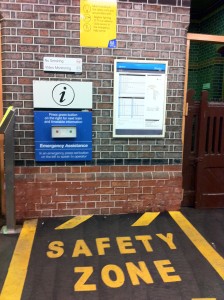Recently, at a meeting of an early career researchers network with an interest in STS in Berlin, we discussed if we want to promote the network at a summer school conducted at a Department for the History of Science. Listening to the discussion, my thoughts moved to the question of how to engage researchers from the field of History of Science in STS scholarship. What would they need to do to become engaged in STS? I was then reminded of a discussion we had at EASST Review about how to compose a new editorial board (more on this next year). Talking about one potential candidate, we discussed the fact that ‘there isn’t very much STS in this CV’. Certainly, if someone wants to work with EASST Review, showing some STS activities, topics, or approaches were helpful. Yet, only a few of the STS researchers I know hold positions in STS departments. More often they are affiliated with other departments and publish in sociological, philosophical or educational journals. They might even teach courses, write articles, give talks and organize workshops that might not primarily be concerned with STS questions or issues, and seldom apply for grants that promote perspectives exclusively taken by Science and Technology Studies. However, I often feel inspired by their work in the field of STS and ‘not very much STS’ in a CV does not necessarily give information about the researcher’s position towards or in the field of STS. What then would new researchers have to do to become engaged in STS activities? Is there something like a STS comfort zone or even a STS safety zone?
I understand STS as a set of literature, research fields, methodologies/theories, situated material-semiotic practices and networked communication among researchers who travel to and organise conferences. I frame it as a specifically ordered/ordering microworld (Verran 2001, 159) from which generalizations emerge through collective practices. It contributes to academic discourses by pointing to particular research areas, providing certain analytical research tools and providing means to re-enact disciplinary boundaries, particularly in interdisciplinary research. Understanding STS this way, its own boundaries are enacted as fluid and the practices that generate STS scholarship are interconnecting and intertwined with those of other researchers, not only the ones directly engaged in STS. Openness to other broad streams of scholarship and a willingness to engage with their issues, methods, methodologies/theories, research areas and researchers co-constitute STS activities.
In order to engage with this ordered/ordering microworld, emerging STS scholars would have to engage in the material arrangements and collective activities through which STS emerges. This, however, is becoming a major challenge when considering that in the international STS community some scholars hold positions in STS departments and others in a variety of other departments. What researcher can do or cannot do is shaped by the institutionalization of STS in their countries.
One key challenge is related to the politics of research funding and the lack of funding for STS inspired projects. I’ll include one example from Germany, where disciplinary boundaries are rather distinct: the German Research Council (Deutsche Forschungsgemeinschaft, DFG) had a budget of 2.7 billion euro in 2014 and so is one of the most influential funding bodies in Germany. When revising the criteria for the funding of interdisciplinary research, I noticed that engaging in STS activities might not be sufficient for a successful grant application. Any grant application is reviewed by one of 48 Assessment Review Boards. Each has between two and five board members who are responsible for reviewing, sending out to review and assessing reviewers’ reports. STS is not among the 48 research areas, so researchers from different research areas, who may be aware of STS approaches or not, eventually assess grant applications that promote the scope and the tools provided by STS scholarship.
This has consequences for German researchers who want to engage in the ordered/ordering practices of STS scholarship. When applying at sociological theory, empirical social research or other fields of scholarship, researchers need to link their research to at least one of the 48 the research areas. Researchers who employ STS approaches in grant applications at the DFG enact certainly the openness to other broad streams of scholarship and a willingness to engage with them. Yet, these researchers – and particularly early career researchers with an interest in STS in Germany – might face the challenge of situating themselves in more than one discipline.
When the engagement of possible new researchers in STS requires an interdisciplinary positioning in Germany, and when researchers in other European countries might face different challenges, how then do we deal with the requirements for STS in CVs? One way of responding to this issue is probably by understanding how CVs are situated as well and to acknowledge disruptions and interstices.
